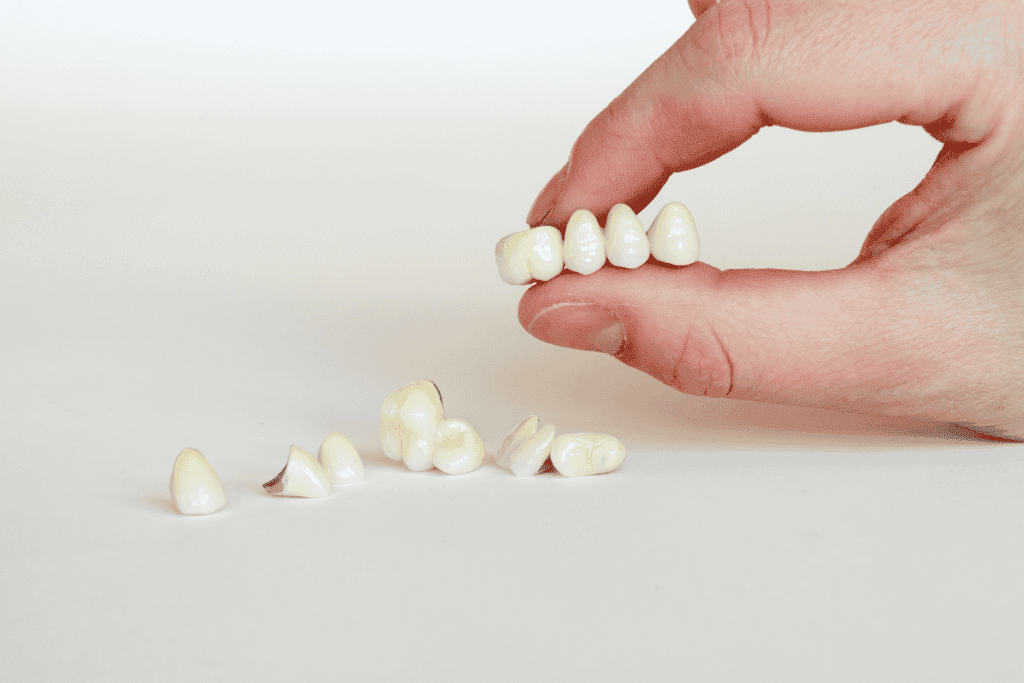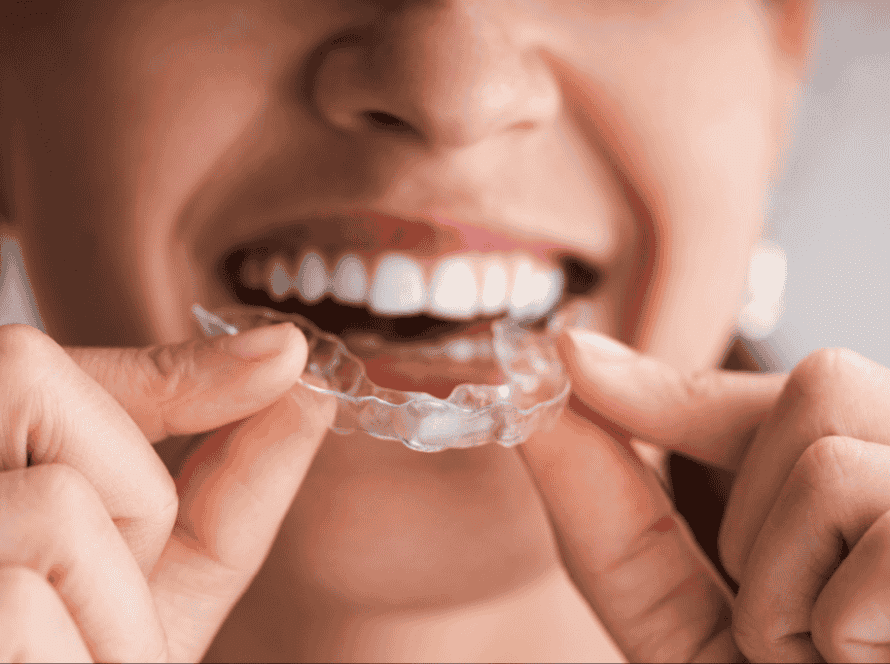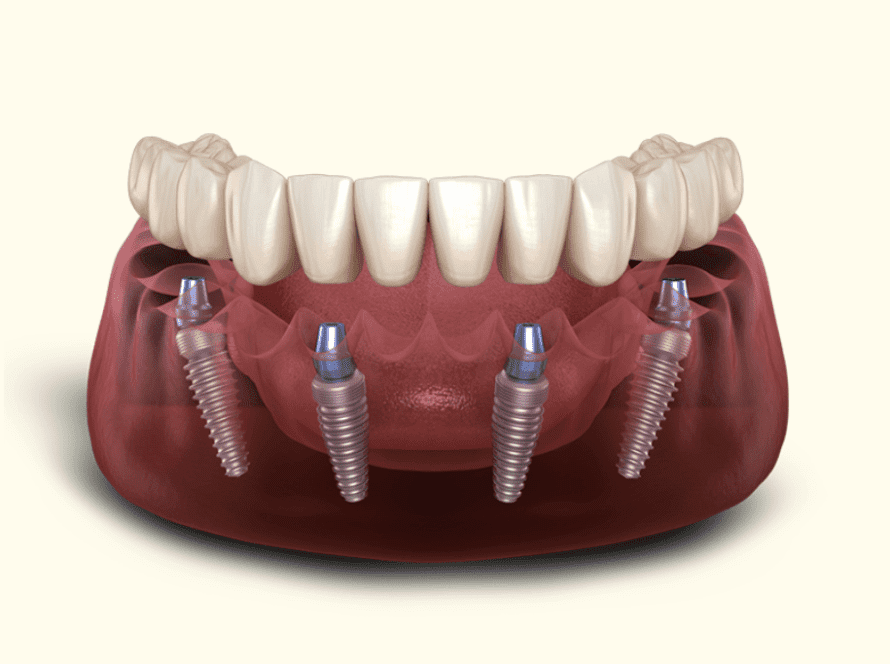A dental bridge is a prosthetic tooth replacement for one or more lost or damaged teeth. With a bridge, the artificial teeth are held in place by one or more natural teeth on either side of the opening.
Dental bridges are typically fixed as they are cemented on the supporting teeth. Dentists refer to each artificial tooth in a bridge as a “pontic,” and some medical professionals refer to a bridge as a “fixed partial denture.”
A Dental Bridge: What is It?
One or more teeth can be replaced with a dental bridge. Dental bridge prosthetic teeth mimic natural teeth in appearance and functionality.
A patient may consult a prosthodontist, a dentist focusing on restoring and replacing lost teeth, or a general dentist for a bridge. In any case, there are numerous ways to close a gap in a smile.
One possible treatment is a crown, which is a false tooth affixed on a tiny piece of genuine tooth that the dentist has ground down. However, a crown by itself is not an option when a person has lost a tooth, or the dentist has had to extract it; in these cases, a dental bridge might be one of the alternatives.
A bridge is a construction with one or more artificial teeth. One or more crowns on either side of the missing tooth or teeth are frequently used to secure the construction in place. For instance, a dentist can use a bridge to bridge a gap left by a patient who has lost multiple front teeth due to an accident or disease. After tooth extraction, a person might not want a gap in their teeth for aesthetic reasons or because they require the tooth in that location for chewing.
A very effective alternative for dental bridges is a permanent dental implant. Dental implants are prosthetic teeth that are surgically placed into the jaw bone. For others, especially those with several missing teeth, dentists advise implants to assist in stabilizing a bridge.
Consultation and Treatment Planning
You will be informed of the various materials used by the dental laboratory to build your restoration if you and your dentist decide that a bridge is the best option for replacing your missing tooth or teeth. The location of the bridge in the mouth, whether or not you clench or grind your teeth (bruxism), the extent of your dental insurance, and other parameters specified by your dentist will all affect the availability of materials. Modern bridges can be made entirely of high-strength, metal-free materials like zirconia or alumina, or they can be made of porcelain and metal, porcelain and gold, or a combination of the three.
To prepare the best restoration, your dentist will take preoperative photos, X-rays, and imprints of the treatment region. Your bridge may consist of three pieces, depending on how many consecutive teeth you are missing: one or more fake teeth (called pontics) to cover the space between two crowns abutted to the teeth on either side of the gap. Once the abutment teeth have been prepared by your dentist, more impressions will be taken.
Candidacy Procedure Details
Your dentist assesses your candidacy during the initial appointment by looking at the condition of your gums and other teeth. For your dentist to prepare the teeth needed to support the bridge, candidates are given a local anesthetic. Before the support teeth may be utilized as support teeth, your dentist might need to rebuild them if they are severely decaying or broken down.
The next step is for your dentist to construct a model of your teeth by taking an impression of the prepared teeth using a substance that resembles putty. At the Fort Lauderdale Dental Aesthetic Center, we use digital intraoral scans which make it a lot more comfortable and convenient to make dental impressions, especially for patients who tend to gag during the process of impressions. An experienced lab technician uses this model or impression as a guide while fabricating your bridge, ensuring it fits the prepared teeth exactly. Your restoration must fit flawlessly to prevent future oral health issues like tooth decay.
Your dentist fits you with a temporary bridge while your bridge is being made to prevent harm to your teeth and gums until your permanent bridge is ready.
You will need to make a second appointment for the dentist to finish the process of fitting and cementing the bridge.
Recovery and Post-procedure Care Near Me
Your dentist will provide you with hygiene instructions to maintain the longevity and function of your bridge as well as the health of your gums and teeth once it has been cemented into place. You can effectively and completely floss the regions around your bridge and in between the pontic and underlying gum tissue by using a specialized floss threader. It should be applied every day to stop bacteria and plaque from accumulating. At least twice a day, teeth should be properly brushed with fluoride toothpaste.
Your dentist may present you with two options if you are missing teeth on the same side: a dental bridge or dental implants. A bridge is a specially designed tooth or teeth used to fill the gap left by one or more missing teeth. If placing a dental implant is not a good option (due to a patient’s unique medical condition or lack of bone for inserting a titanium implant), we at Fort Lauderdale Dental Aesthetic Center advise getting a dental bridge instead.
Several materials can be used to create the dental bridge. For instance, Fort Lauderdale Dental Aesthetic Center provides patients with bridges made of Zirconia at affordable prices. This material is robust and fracture resistant. Currently, the most common alternative in dentistry is a metal-free prosthetic. However, the dentist could advise getting a PFM bridge in certain circumstances. The zirconia dental bridge procedure at Fort Lauderdale Dental Aesthetic Center can be completed in as few as two visits. The dentist will prepare your teeth and take a digital scan or an impression of your teeth at your initial appointment. Generally speaking, it could take up to two weeks for your bridge to be prepared for cementation.
Bridges can cost on average, from $900 to $2000 per tooth (compared with the cost of dental implants per tooth). Remember that each prosthetic tooth replacement comes at this price. You may only be replacing a single missing tooth, but your bridge might have three pontics, meaning you’re paying for three artificial teeth. The price range in this instance would be $2700 to $4,500.





